You’ve probably never given it a second thought, but you would be pleased to know that you use ball bearings every day, from T.V. remotes to cars and washing machines. They make everything more efficient and frictionless. They are never out of their demand and are used in all sectors. Construction around them in order to satisfy modern-day engineering needs just never stops. This blog elaborates on the types and applications of ball bearings, their functions, and how they have become an essential part of today’s world. So, no matter if you’re an engineering expert or just an amateur wanting to know how the world works, I hope this blog does justice in making you understand the strength and importance of ball bearings.
What are the different types of ball bearings?
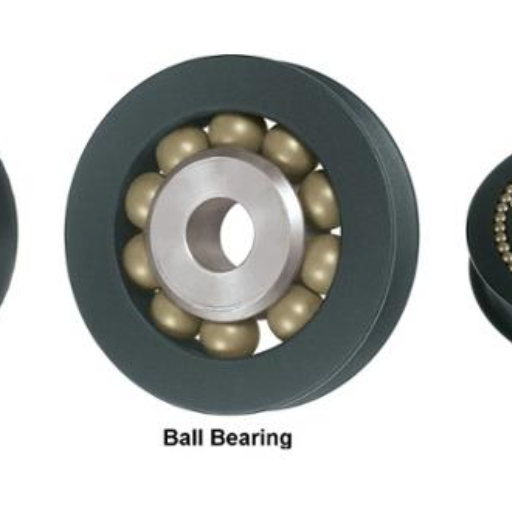
Different designs of ball bearings are fabricated, each one serving a mechanical purpose. The most frequently used are the deep groove ball bearings, which are multi-purpose and can be used in high-speed operations; angular contact ball bearings, which are intended to take combined heat and thrust loads; self-aligning ball bearings for those applications where some degree of misalignment exists; and thrust ball bearings, which take only thrust loads. These components have distinct features that enhance the functioning of various devices, as well as automotive and industrial machinery, among others.
Deep groove ball bearings: The most common type
Suppose an award was to be given for the most popular and most utilized type of bearing; deep groove ball bearings would earn it. Based on my experience, their widely enjoyed use is largely due to their straightforward yet effective design that allows for radial and limited axial loading. From electric motors to kitchen machines and even in the automotive industry, they provide reliability and great mechanical performance. Their design makes them ideal for many applications that require minimal upkeep and operate at high speeds. Most importantly, however, they have proven to be quite reliable; engineers can be confident that deep groove ball bearings will work well, even in unfavorable conditions.
Angular contact ball bearings: Handling combined loads
Angular contact ball bearings are able to operate efficiently and acceptably under combined loads, which have radial and axial forces. what sets these bearings apart is their ability to handle much higher axial loads than normal deep-groove ball bearings. This is mainly attributable to the fact that their raceways are designed to be angularly displaced with respect to one another.
To put it even more clearly, the angular contact ball bearings have the capability of transferring loads between the inner ring and the outer ring of the bearing at an angle. There are a number of other important factors that determine their effectiveness ,which are given below:
- Contact Angle: The contact angle in angular contact ball bearings is important in determining the extent of their axial load handling capacity. Bearings having greater contact angles (15°, 25°, and 40°), are especially suitable for the applications that demand greater axial load support.
- Load Capacity: These bearings are meant to support combined loads, hence with the increase in the contact angle the axial load carrying capacity also keeps increasing. This makes them quite versatile and can be used in a range of applications like pumps, gearboxes, and machine tool spindles.
- Preloading: Angular contact ball bearings are capable of preloading, which enhances rigidity and reduces deflection during operation. This is very important for precision parts especially in the aerospace and robotics applications.
- Material and Heat Treatment: The grade of the material and the heat treatment also help in ensuring that the bearing can cope with high temperatures and stresses which expands their life.
These parameters not only underscore the technical merits of angular contact ball bearings but also guarantee their application in critical areas that require dependability and exactness.
Thrust ball bearings: Supporting axial loads.
Let’s talk about thrust ball bearings. I can’t reiterate enough how important they are in handling axial loads. In essence, these bearings withstand the forces parallel to the shaft and allow the equipment to work normally under large operating loads. As far as I remember, their operating characteristics are most effective in machine tool spindles or precision-engineered devices where precise alignment and restriction of axial movement is a requirement. The thrust bearings are easily fitted and provide a sound solution to axial loads problems, they have proved to be the best one in many applications.
How do ball bearings reduce friction in machinery?
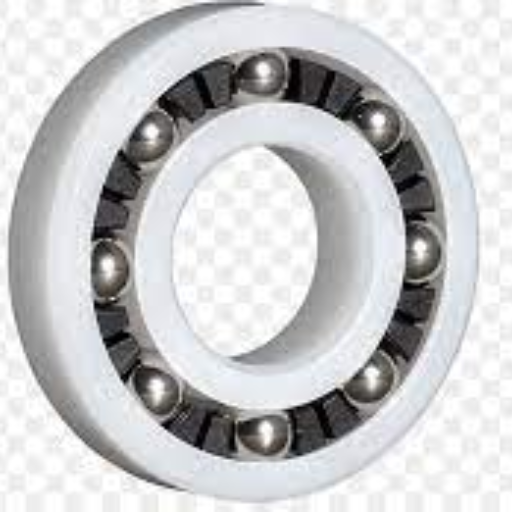
Revolving elements of machines always have to face friction in their operation owing to the inextricable fact that these elements are in motion, and moving elements do make contact with the vast surface area of stationary elements. However, the existence of ball-bearing mechanisms greatly reduces such friction. Ball devices are inserted axially between the inner and outer rings of the bearing casing, which enhances rolling rather than sliding. The result is that the amount of friction is immensely reduced, and hence, the motion produced in the system is effective with minimum power wastage.
Understanding the low friction principle of ball bearings
ball bearings are an ingenious means of decreasing friction in machinery. This can be attributed to their structure as well as their functional principles. Let me first explain it in simpler language first and address the variables that make them work effectively:
- Rolling vs. Sliding Motion:The main concept of ball bearings is rather simple—they replace sliding motion with rolling motion. Instead, a sliding motion brings a great degree of friction as a result of the broad contact region of two surfaces. Rolling, on the other hand, restricts this contact area and, therefore, friction to a great extent.
- Smooth Spherical Balls: The balls contained within the bearing have to be spherical and smooth as crystal. Such exactitude enables the balls to roll with ease, thereby aiding the low-friction movement that is fluid. Any deformities to the balls would result in increased friction, and therefore, they need to be smooth at all times.
- Lubrication: Hence, proper lubrication is important in this case. A thin film of lubricant (oil or grease) reduces even further the chances of friction through the barrier that the lubricant forms on the surface, preventing metal-to-metal interaction. It also aids in cooling down the temperature built up in the course of performing the functions deemed relevant to the purpose.
- Material Properties: The selection of the materials for both the balls and the races (inner and outer rings) is done wisely. These are usually hard steel or ceramic materials, which are tough and can take up considerable amounts of stress and load without warping. This toughness ensures that the rolling motion does not change throughout the intended period.
- Load Distribution: Ball bearings are made to carry the load evenly. This uniform distribution helps to reduce the chances of point koji wear and friction in excessive forms.
Taking into account all these elements, such as rolling of motion, lubrication, smooth spherical balls, material characteristics, and load distribution, leave us with an environment where friction is minimized. This not only enhances efficiency but also reduces the time and costs over long periods of the machines’ life. Ball bearings, for instance, remain a fascinating example of how simple and elegant engineering solutions can be used to address difficult problems.
Comparing ball bearings to other bearing types
- Roller Bearings
Roller bearings stand out when it comes to dealing with heavy loads and radial forces. Unlike ball bearings which have sphere-shaped rolling elements, roller bearings come in cylindrical and conical shapes and, thus, have a bigger contact surface. This leads to the even distribution of stress on the components, making them perfect for heavy-duty applications such as industrial machines and conveyor belts. However, having a bigger contact surface area increases friction at higher speeds, affecting the roller bearings’ performance more than ball bearings.
- Plain Bearings
A plain bearing is also called a bushing, and instead of using rolling elements, it uses sliding motion. Their most basic structural design consists solely of one smooth surface, enabling easy motion of one component to a certain degree about another. Minimum mean bearing design’s effectiveness, cost, and weight are useful in a range of applications, although plain bearings tend to have high friction and wear rates when not lubricated. It is because they are used in automobiles, suspensions, or even household appliances, where they require slight maintenance and noise usage.
- Magnetic Bearings
Magnetic bearings instead utilize magnetic fields to replacement plugs, thus rotating a shaft without having to make any series of contacts. Since they are free of contact, these bearings can be used for devices that spin at extremely high speeds. These bearings are always placed inside turbines, compressors, and even advanced scientific devices because of how precise and reliable they can maintain their position throughout time. But they come with complex systems as well as a high price for installation.
- Hydrodynamic Bearings
Hydrodynamic bearings have a metal-to-metal surface minimization due to their use of a continuous lubrication system, which in turn reduces wear. They effectively have a water or oil film on their surfaces which acts as close to perfect frictionless fluid-bearing surfaces. Such remarkable design of hydrodynamic bearings allows them to function in rough complements, so thrusters are equipped with high power low speed boilers rotating pumps. However, because of the thurst ring design, the continuity of operation does increase the costs.
- Thrust Bearings
Purpose made for axial loads are thrusters, which have hype pessimism on the cost which on other areas like the strong axial load’s application has ball thrust and roller thrust, which are great use. A ball bearing in a shaft assembly makes the revolution of items easy due to lower friction, which is great for low-torque items like chair swivels. On the other hand, the roller thrust minimizes losses to resistive torque and is more suitable for heavier work such as automobile transmission. They are strong at giving power to an intended radial axis of spin, however they do have limits.
Key Data Comparison
|
Bearing Type |
Friction Level |
Load Capacity |
Speed Capability |
Maintenance Requirements |
Typical Applications |
|---|---|---|---|---|---|
|
Ball Bearings |
Low |
Moderate |
High |
Low |
Fans, bicycles, precision instruments |
|
Roller Bearings |
Moderate |
High |
Moderate |
Moderate |
Conveyors, heavy machinery, wind turbines |
|
Plain Bearings |
High |
Low |
Low |
Moderate to High |
Automotive suspensions, door hinges |
|
Magnetic Bearings |
None |
High |
Ultra-High |
Low |
Compressors, scientific instruments, energy systems |
|
Hydrodynamic Bearings |
Very Low |
High |
High |
High |
Marine engines, turbines, large industrial tools |
|
Thrust Bearings |
Low to Moderate |
Axial Only |
Low to Moderate |
Moderate |
Automotive transmissions, swivel systems |
This in-depth comparison demonstrates the broad application of ball bearings, as well as detailing the advantages of each bearing type. While ball bearings are quite decent at performance, cost, and efficiency, the other types of bearing cater to niche needs, which means that almost all mechanical engineering problems have a solution.
What are the primary uses of ball bearings in industry?
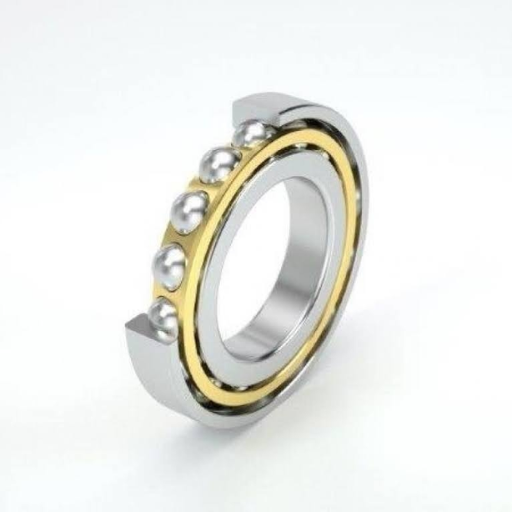
the main function of a ball bearing is to minimize friction while providing support for rotating parts, therefore Ball bearings are quite crucial components in numerous industries. Ball bearings are used in almost all machines as they make wheels and transmissions of vehicles, electric motors, industrial conveyor systems, etc. , work smoothly. They have the ability to take radial and axial loads, which is why they are needed in manufacturing, aerospace, the medical sector, and other industries. To put it bluntly, ball bearings are necessary elements in order to achieve reliability, accuracy, and functionality in the majority of spheres.
Ball bearings in high-speed applications
Ball bearings are used in various high-speed applications across industries as they reduce friction to a great extent while operating with high precision and efficiency. When dealing with systems of high speed, there are several factors that affect the performance and the wear of ball bearings. These parameters are as follows:
- Material Composition
Drives that would support high speeds require ball bearings manufactured using premium stainless steel or ceramic materials. A silicon nitride ceramic develops into an ideal ball bearing because of its hardness, low thermal expansion, and lightweight. Most importantly, such ball bearings stand a great chance against extreme conditions of speed and temperature without the risk of deformation.
- Lubrication
Any high-speed drive should have lubricants in order to reduce friction and heat generation. Mildew and mildew oils are also important, but they should be utilized according to the work environments’ parameters, such as temperature levels and the amount of force applied over them. The additives allow for favorable temperatures to be attained, thanks to synthesis lubricants,s which are ideal.
- Precision Grade
Bearings that operate over high speeds are rated higher in precision, tending to fall under the ABEC-5 or ABEC-7 classifications, which ensures a high tolerance for them. This barely noticeable detail facilitates smooth rotation while reducing vibrations crucial for the impact of items such as turbines and high-speed spindles.
- Load Capacity
All bearings’ radial and axial loads need to be known. High-speed rotors have bearings inserted with load ratings aimed at the high-speed targets in order to prolong their lives without them distracting the rotor, as this overtime leads to excessive wear and then ideal fail systems.
- Thermal Management
The fast operations result in good amount of heat being generated. The bearings for these applications are specially designed so that advanced materials, coatings, or lubricants are incorporated, which are able to withstand high temperatures without degradation.
- Design and Configuration
Designed Innovations such as hybrid ball bearins (which combine metal and ceramic balls), are specially used in high speed applications because of their better strength and lower coefficients of friction. In addition, the use of shielded or sealed bearings ensures low wear and tear, even in harsh conditions.
Due to these factors, the functionality and accuracy of ball bearings, even at very high speeds, remain unaffected, which permits the functionality of an entire family of devices, such as jet turbines, medical devices, industrial machines, etc. The performance and lifespan of ball bearings largely depend on choosing and servicing according to the above-listed parameters.
Applications in heavy machinery and industrial equipment
Ball bearings are invaluable components of heavy machinery and serve to provide support, increase the accuracy of motion, and reduce friction. Ball bearings find application in industrial equipment such as conveyor belts, gearboxes, turbines, and pumps, whereby stability and performance are paramount. They are essential for maximum efficiency and reliability, particularly in tough industrial conditions, since they take radial and axial load. In such applications, expertise in design and regular inspections are necessary to ensure their availability.
Ball bearings in precision instruments
As far as high-precision devices are concerned, ball bearings are the most critical mechanical elements that guarantee efficacy and smoothness of the equipment. Their ability to revolve or oscillate with very low friction with most rotating or oscillating devices makes them essential components in microscopes, gyroscopes, etc, and other high-level measuring tools. In my experience, the careful placement of the pre-engineered and high-quality bearings into the devices can significantly enhance the life span and consistency of the instrument. Like in any other system, an adequate amount of lubrication and servicing is important for good functionality and reliability.
How do deep groove ball bearings differ from other types?
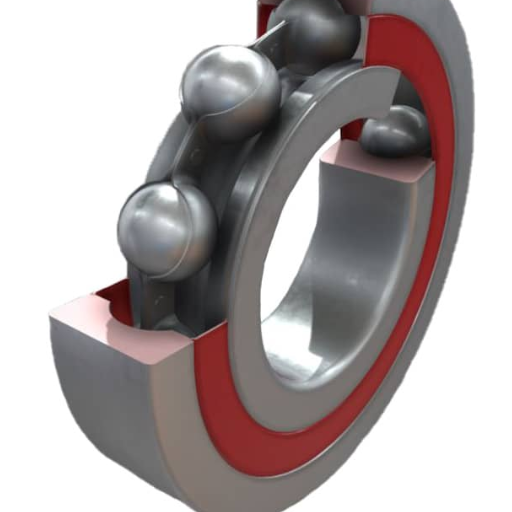
Thrust ball bearings differ from other types primarily in their design and usability. This is due to their complex geometry. Their deep raceway grooves are able to support axial and radial loads in high-speed applications. Deep groove ball bearings are more general purpose than roller or angular contact bearings and are self-contained which do not require active maintenance to achieve reliable operation in a multitude of conditions and industrial applications.
Design characteristics of deep groove ball bearings
the design of the deep groove ball bearing structure is rather uncomplicated yet very effective. These bearings have a deep, seamless channel, making it possible for the balls to be closely packed, thus enabling smooth functioning during high-speed revolutions. The geometry is especially suitable for the transmission of forces consisting of both radial and axial loads, which makes it a suitable fit in many applications. They are also well suited for environments requiring little maintenance because of their small dimensions and low lubrication operation.
Load-bearing capabilities of deep groove bearings
Ball bearings with a deep groove are excellent for load-bearing. Their basic operation is to bear radial loads, but they also bear axial loads to a limited extent in both directions. Such dual capability makes them a key part of the equipment that has to be robust, energy-efficient, and perform under different operational conditions.
What are the advantages of using angular contact ball bearings?
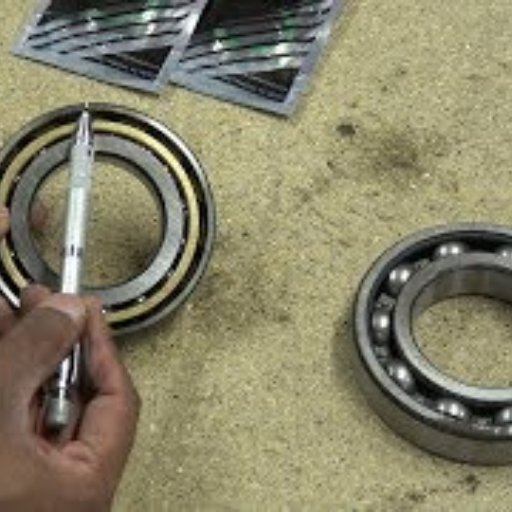
I am aware that angular contact ball bearings are capable of carrying a combination of radial and axial loads, which makes them ideal for high-precision and high-speed applications. Such a design enables increased load capacity and stiffness, which are requirements for reliable machinery operating in dynamics. In addition, such bearings can sustain greater nominal thrust loads in only one direction and when combined in sets, they increase the level of stability and load sharing of the assembly even further. This range of applications and performance makes angular contact ball bearings a necessity in applications from the automotive industry to aviation.
Handling combined radial and axial loads
Angular contact ball bearings are perhaps the best means to resolve the problem of bearing combined radial and axial loads, given their construction. Such bearings are meant to support loads in both directions by virtue of the directional orientation of the contact angle of the bearing which determines the load that the bearing can support. The use of these bearings, when paired, helps the machine to be more stable, supports more loads, and improves performance, making such machines ideal for high-performance applications in different industries.
Applications of angular contact bearings in specific industries
angular contact ball bearings are indeed very important in many industries. For instance, the automotive industry is one area where they provide key support to the operation of transaxles and wheel hubs by combining the supporting of radial and axial loads. Likewise, the aerospace industry utilizes the bearings in applications requiring high levels of torque and precision, such as jet engine shafts and control systems. The jet and control systems use them because they’re accurate and dependable under large workloads. I have seen them in the manufacturing industry, where they are also effective in conjunction with high-speed machine tools, which give precision and strength. With their flexibility and strength, these bearings have, time and again, proved to be a crucial part of the development of the industry.
How to choose the right type of ball bearing for your application?
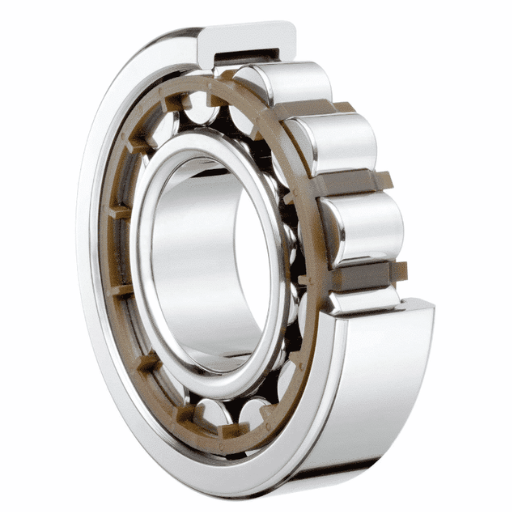
In order to select the most appropriate ball bearing for a given application, bearing selection always involves consideration of a few key areas. For starters, identify the load considerations required: do you deal with predominantly radial loads, axial loads, or a combination of both?
Next, how fast will the bearing be operational, and what temperature will it be working at in order to see if the bearing can fulfill those conditions without failing? Compatibility of materials is also very important where, for instance, an application that will be put in a corrosive environment or extreme longevity is required. Furthermore, consider whether space is an issue, as some bearing types, such as angular contact and deep groove ball bearings, are better suited to minimalist designs.
Lastly, prioritize where the level of precision and life span is needed around the requirements of your application. In doing this, your parameters will be in synchrony with your operational requirements, making the performance and reliability more assured.
Factors to consider when selecting ball bearings
choosing the right ball bearing for your application can be the critical moment that determines how well or how poorly your application works. The first thing that I do is assess the type of load which is going to be applied: radial, axial or a combination of the two. Speed and temperature are other operating conditions that need attention; they are important in deciding if a regular bearing will do or if a custom, high-end bearing will be needed. As regards materials, my focus is on corrosion-resistant alloys or heavy-duty ones for extreme or prolonged applications. Space restrictions are an issue, but such designs as deep grooves or angular contact bearings often solve them reasonably well. Maximum accuracy and durability: these two features go without saying considering the level of sensitivity and requirements of the given application. The primary intent is to incorporate some aspects of these variables in consideration of the application requirement for proper and effective functionality.
Matching bearing type to load requirements
In order to specify loads, I start with the dominant load direction, which necessitates the selection of the bearing type. For pure radial loads, I go to deep groove ball bearings, which are excellent because they provide versatility and high load capacity. In my practice, when the application has only axial loads or combinations of axial and radial forces, I very often recommend angular contact or thrust bearings because they are made for the purpose of working under such conditions. Roller bearings like the cylindrical or the tapered types are very good in this regard as they stand up to heavy application loads yet maintain functionality. Great care has to be taken to analyze the load dynamics because selecting a bearing of the wrong type may cause it to wear out or fail quite fast, and the whole system cannot work properly. In every scenario, it is very important to have precision and specific requirements under consideration.
Importance of bearing precision in various applications
The selection of equipment, specifically the bearing precision on which the machinery is constructed, is of utmost importance due to its effect on performance, efficiency, and the lifetime of the machinery. With this problem properly defined, it is clear that one of the goals of bearing design is to achieve the most precise bearing possible. This is critical in high-precision or speed operations such as aerospace, robotics, and medical equipment. On the other hand – lack of precision may result in energy dissipation, higher wear and tear and system outages, hence designing and taking care of the criterion for each application becomes necessary.
Reference
- Ball Bearings: Types, Applications, Design, and Benefits – This source provides an in-depth look at ball bearings, including their designs and applications in various industries.
- Types of Bearings – This page explains different types of bearings, focusing on ball bearings and their characteristics.
- FAQ – Different Types of Ball Bearings & Applications – This FAQ section covers various types of ball bearings and their specific applications.
Frequently Asked Questions (FAQs)
Q: What are ball bearings, and how do they work?
A: Ball bearings are a type of rolling-element bearing that uses balls to maintain separation between the bearing races. They work by allowing rotational motion with minimal friction between moving parts. Ball bearings provide smooth operation and reduced wear, making them essential in various mechanical applications.
Q: What are the main types of ball bearings?
A: The main types of ball bearings include single-row deep groove ball bearings, single-row angular contact ball bearings, double-row deep groove ball bearings, and thrust bearings. Each type is designed for specific load capacities and applications, with radial ball bearings being the most common design.
Q: What are the advantages of using ball bearings?
A: Ball bearings provide several advantages, including low friction, high efficiency, and the ability to handle both radial and axial loads. They have a lower coefficient of friction compared to other bearings, which results in reduced heat generation and improved energy efficiency. Ball bearings are also relatively easy to maintain and have a long service life.
Q: Where are ball bearings commonly used?
A: Ball bearings are used in a wide range of applications across various industries. They are commonly found in automotive engines, transmissions, and wheels; industrial machinery and equipment; household appliances like washing machines and ceiling fans; bicycles; and precision instruments such as gyroscopes and hard disk drives.
Q: What materials are ball bearings made from?
A: Ball bearings are typically made from high-grade steel, such as chrome steel or stainless steel. The bearing balls can also be made from other materials, including ceramic bearing balls, which offer advantages like higher hardness and lower density. The choice of material depends on the specific application and operating conditions.
Q: How do roller bearings differ from ball bearings?
A: While both are types of rolling-element bearings, roller bearings use cylindrical rollers instead of balls. Roller bearings generally have a higher load capacity than ball bearings but may have slightly higher friction. Ball bearings, on the other hand, can operate at higher speeds and are more versatile in handling both radial and axial loads.
Q: What factors should be considered when selecting ball bearings?
A: When selecting ball bearings, factors to consider include load capacity, speed requirements, operating temperature, environmental conditions, precision needs, and space constraints. The type of load (radial or axial), the magnitude of the load, and the desired lifespan of the bearing are also important considerations in choosing the right ball bearing for a specific application.
Q: How do single-row deep groove ball bearings differ from single-row angular contact ball bearings?
A: Single-row deep groove ball bearings are designed primarily for radial loads and can handle some axial loads in both directions. They are versatile and widely used in many applications. Single-row angular contact ball bearings, on the other hand, are designed to handle combined radial and axial loads. They have raceways in the inner and outer rings that are displaced relative to each other in the direction of the bearing axis, allowing them to support higher axial loads in one direction.
